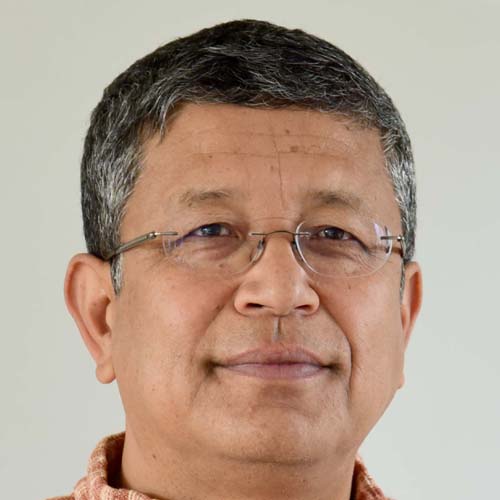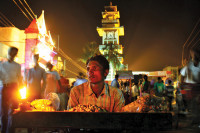Opinion
A long and lacklustre reign
If there was one thing Nepal got during Birendra’s 18 years as the supreme monarch, it was a number of slogans
Deepak Thapa
In his celebrated novel, The Fall, Albert Camus asks: ‘[W]hy we are always more just and more generous toward the dead?,’ and proceeds to provide the answer: ‘The reason is simple. With them there is no obligation.’
That seems to be the case with the hagiographical articles around King Birendra routinely published around June 1, the date of the palace massacre in 2001. Fifteen years on, such pieces continue to dwell more or less around one facet—that he was a decent human being. To give one example, there was a personal story yesterday by a general in his guard contingent extolling the generosity of the king for i) allowing a non-Pancha to speak in a mass gathering in Palpa, and ii) releasing an unlawfully detained journalist in Bhairahawa the day after the matter was brought to the king’s notice. All personal reminiscences about Birendra are quite similar in that they involve the king doing something bordering on the humane only to be taken as a sign of greatness.
The circumstances of his death probably have a lot to do with these exalting views as is the fact that by 2001, the political class had so thoroughly discredited itself that people had forgotten that just 10 years earlier, the streets of Kathmandu had rung with cries of ‘Bire chor, desh chhod’. But, in a serious disservice to Nepal’s modern political history, few ventures examine King Birendra’s legacy as the all-powerful ruler of the country for nearly two decades. For, he was not only, as the usual characterisation goes, a ‘gentle but weak king’; without doubt he was quite a lousy one as well.
The sloganeer
When he became king in 1972, Birendra came up with the slogan: ‘Bikas ko mul phutaon.’ Translated roughly as ‘Let the torrent of development gush forth’, it was meant to engage everyone in the task of nation-building. Of course, with Birendra at the head of the whole enterprise, nothing happened, and the only torrents seen nationwide were from men chanting the slogan as they urinated on the side of the road (for which they were reportedly liable for arrest).
If there was one thing we got during his 18 years as the supreme monarch, it was a number of slogans. In 1975, during the farewell dinner to the dignitaries who had assembled from around the world for his coronation, Birendra proposed that Nepal be declared a ‘Zone of Peace’ (ZoP). And, for the next 15 years, that was something we were not allowed to forget. Op-eds would examine the ZoP concept from any number of angles, and all would end up concluding what a great statesman the king was. The government machinery published whole tomes on it. Some people went so far as to write scholarly dissertations on the subject. And the whole effort floundered in the face of India’s studied non-response to it.
In 1985, after 10 years of political turbulence and economic stagnation, Birendra decided to rouse the people once again and thus came the declaration that by the turn of the century, the Panchayat system under his leadership would improve the quality of life of all Nepalis to the ‘Asian Standard’. Within a couple of years though, that promise probably began to look a bit far-fetched or the authorities despaired of figuring out what an ‘Asian Standard’ was supposed to be. So, by 1988, the Asian Standards dream had changed into the much humbler ‘Basic Needs Programme’. The year 1989 was the year of the Indian blockade and a year later, Birendra was out, with practically nothing to show for his 18 years on the throne—except a number of slogans.
The wannabe despot
King Birendra’s tutor from Harvard has written wrote a book titled Democratizing Monarch, in which the professor essays to drive home the point that the king was basically a liberal at heart. The record is far from disputed on this.
The first major amendment to the Panchayat constitution was undertaken in 1975, under the watch of the Eton- and Harvard-educated Birendra. And, what did the country get, but a one-party system under the apparatus known as Back-to-the-Village Campaign and further centralisation of authority in the palace? The supposedly liberal announcement of the 1980 referendum turned out to be nothing but a sham executed on the people by the same king.
Even more gruesome is how his administration dealt with political opponents. In March of 1972, less than two months after his ascension, a rising star within the Nepali Congress, Yogendra Man Sherchan, was mowed down by a vehicle in what everyone believes was a political assassination. A few months later, another Nepali Congress stalwart, Diwan Singh Rai, was killed by government functionaries. The next year saw the assassination of prominent Congress leader, Saroj Koirala, in India. Lest it be mistaken that only Congressites were targeted, a number of communists were also killed, most prominently in 1979, when Ratna Kumar Bantawa, a central committee member of the CPN (ML), was murdered. Then there were the massacres: 16 killed in Dhankuta’s Chhintang in 1980 and seven in Sindhupalchowk’s Piskar in 1984.
These were not individuals such as Durgananda Jha, who had lobbed a bomb at King Mahendra’s vehicle in 1962, or Yagya Bahadur Thapa and Bhim Narayan Shrestha, who had attempted an armed insurrection in 1974, and all of whom were executed. These were political activists or ordinary villagers out to secure their rights. As the paramount head of state, King Birendra was responsible for each and every one of these unlawful killings.
Daftness personified
Those of us who lived through the Panchayat years cannot forget the annual visits of His Majesty, one development region per year. For a full month or more, we were regaled with reports from places Their Majesties had deigned to alight upon from the royal helicopter and the miraculous local achievements demonstrated for their benefit. For someone whose claim to fame included hiking around the country as a crown prince, Birendra must have been pretty daft to appreciate, as the grapevine buzz went, being shown fully grown cauliflowers planted that very morning or turning on a tap with just enough water that came from a bucket poured into the intake for the day.
For many like me, perhaps the biggest benefit of the post-1990 life came from being relieved of sitting through news broadcasts that, in the days before diversity of mass media, we had no choice but to endure. In Panchayat Nepal, the news always began by the king greeting someone like the Grand Vizier of Timbuktu for the 200th establishment day of the banana viziery of Timbuktu, or it would be his receiving felicitations from Fu Manchu for something wondrous as Nepal’s Democracy Day. Or, it would be the grand announcement that the Grand Vizier and/or Fu Manchu had agreed to support the Zone of Peace proposal, bringing the number of such countries to 2,742, or some such irrelevant number. Sometimes, the entire newscast would consist of the reeling off a roster of the names and titles of worthies from the world over who had greeted the king on the occasion of his birthday, leaving just two seconds at the end of it all to inform Nepalis that 1,000 people had died in a volcanic eruption in Never-Never Land, and also that Dr Strangelove had discovered the secret to eternal youth. Fictional names are used here to provide a sense of what the news actually sounded like hearing it day in, day out.
And the wise king presided over it all.




 14.12°C Kathmandu
14.12°C Kathmandu










